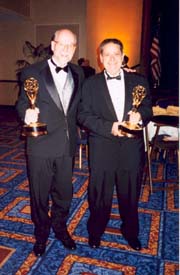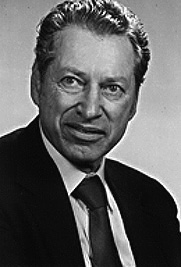The History of Plasma Displays
V. Isn't that beautiful?
By Jamie Hutchinson
If you sit 10 feet away from a 36-inch regular TV, Weber
explains, you can't tell the difference between a normal
picture and the high-definition standard toward which
the TV industry is moving. You could widen the cathode
ray tube—the venerable device that gave TV its
nickname "The Tube"—to the 60 or more
inches required to see a one-millimeter pixel at 10
feet. But the tube can't get wider without getting deeper,
so you would have to knock out a door and use a forklift
to get a big one into your living room. Projection systems
have spatial limitations of their own caused by the
placement of the projector and screen, and they require
a dark room for good results. Liquid crystal displays
have the advantage of thinness (that's why they are
great for laptops), but they are not as bright as plasma
displays, they can't yet be made as wide, and their
pictures disappear when viewed from the side.
That's why Japanese companies like Matsushita and Fujitsu
are finally in a position to see the payoff for their
long commitment to plasma display panels. Weber does
see the possibility of future U.S.-based manufacturing
of plasma displays. But the companies will be Japanese,
looking to move production closer to the growing U.S.
market for their products.
Johnson is more optimistic about U.S. leadership in
the further development of plasma displays. Now retired
from SAIC, he has gone back to running his old consulting
company, which is incorporated in Illinois. Johnson
believes Illinois can have "a second round at the
plate, and maybe hit the ball again." He is interested
in partnering with current ECE faculty and students
who are conducting research relevant to plasma displays.
For example, Professor Kevin Kim's lab is perfecting
"microspheres" that may be useful for evenly
depositing materials in plasma display manufacturing.
Phil Krein developed an energy-saving power supply for
plasma displays. And Mark Kushner developed software
for simulating the physical dynamics of plasma cells.
Johnson would also like to organize a seminar series
on flat-panel displays at U of I.
"The press kept telling me that I was wrong, that
it was going to be the future television," recalled
Bitzer. "But that was not my heart. My heart was
the education." Bitzer must now concede that the
press was right, but he can still point to Weber's 60-inch
wonder with all the pride of a new grandfather: "Did
you ever see a display like that? Isn't that beautiful?"
|

|

|
| Bitzer (right) and his old student Robert Willson
were reunited at the Emmy scientific and technological
awards dinner in New York City on October 2, 2002.
Bitzer retired from the ECE faculty in 1989 and
is now on the computer science faculty at North
Carolina State University. Willson is a systems
engineer at Analex Corporation and a part-time
minister. |
H. Gene Slottow, 1921-1986. ECE head Richard
Blahut and Professor Tim Trick accepted Slottow's
Emmy in New York and then presented it to Slottow's
widow, Irene, at a ceremony in Urbana. Mrs. Slottow
has donated the Emmy to the ECE department. |
|